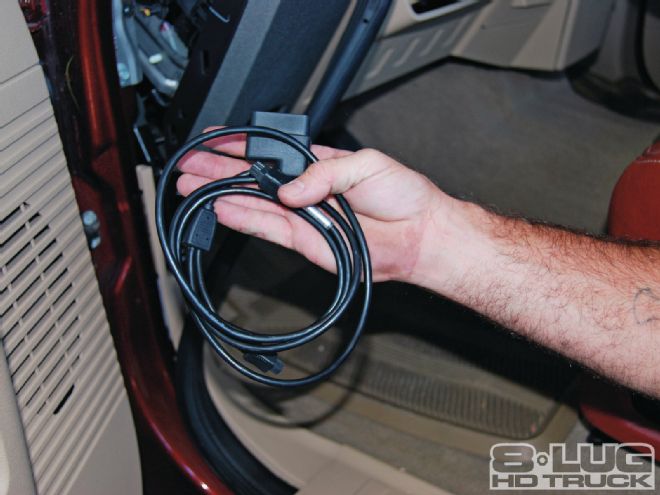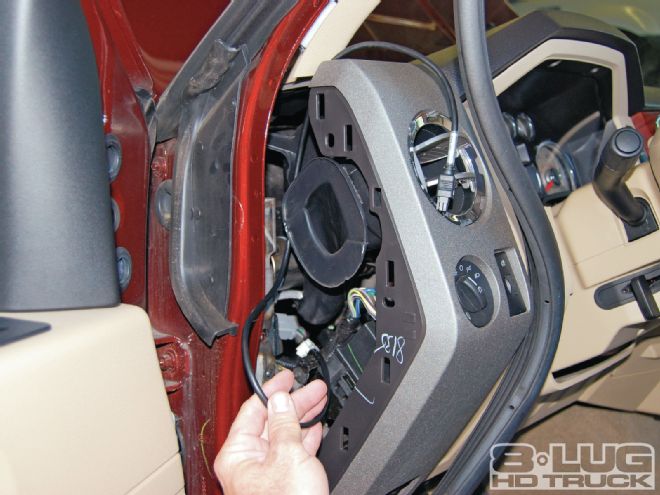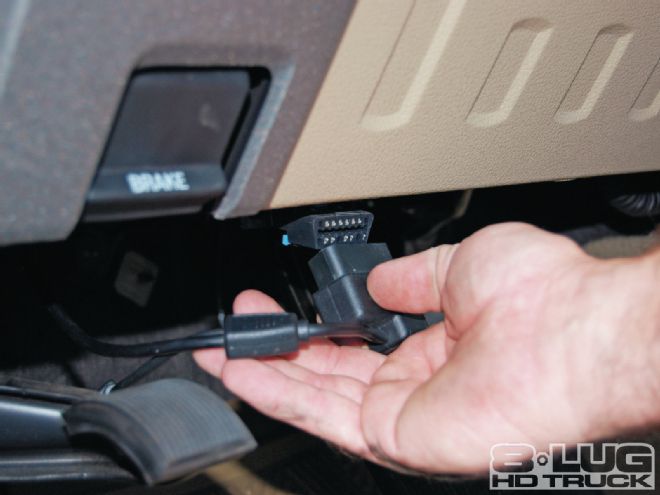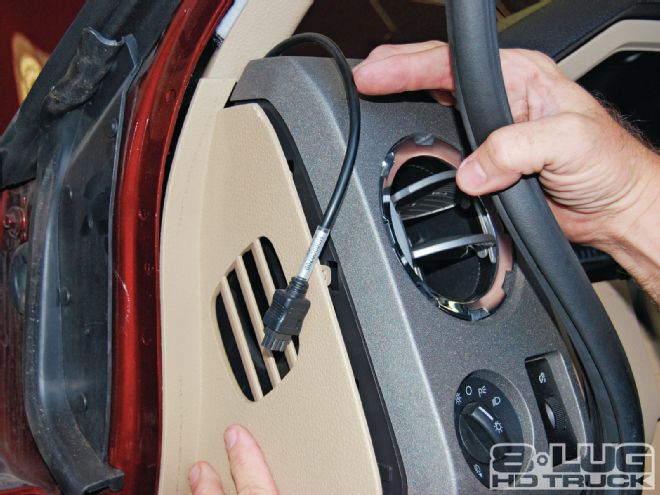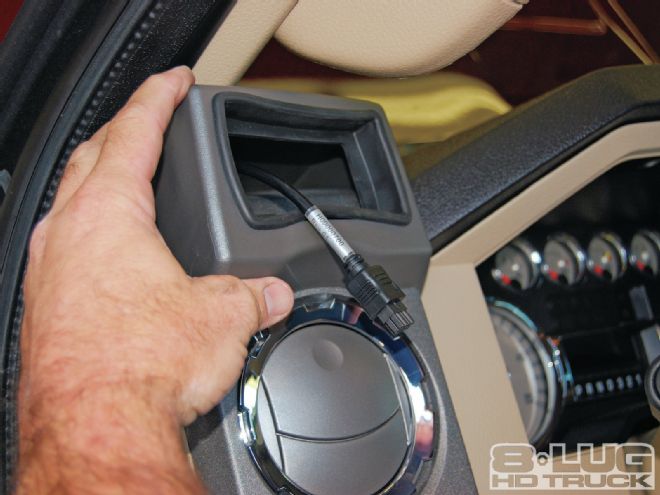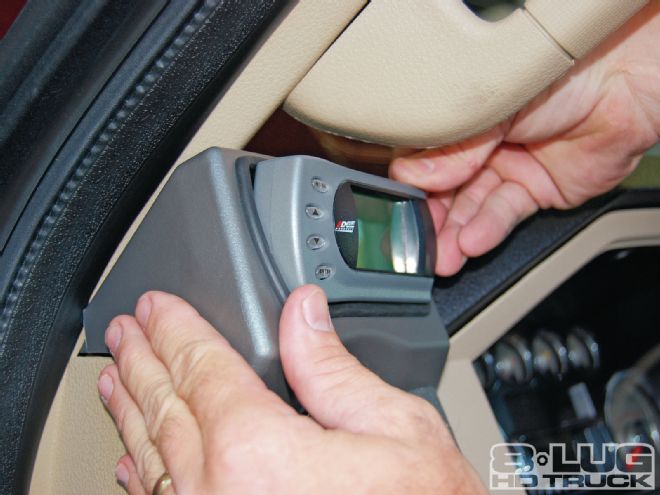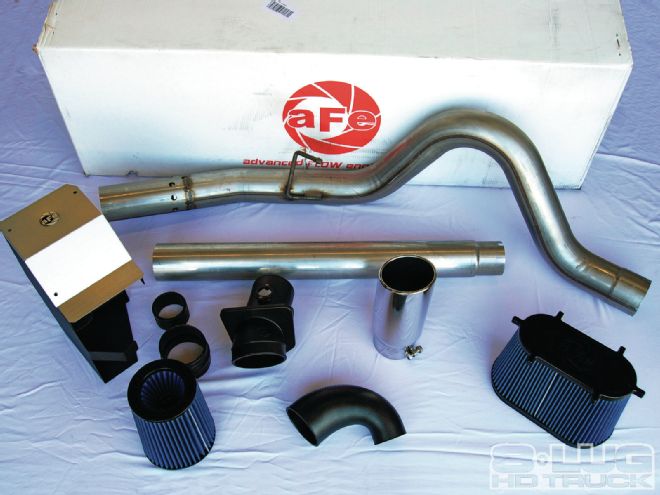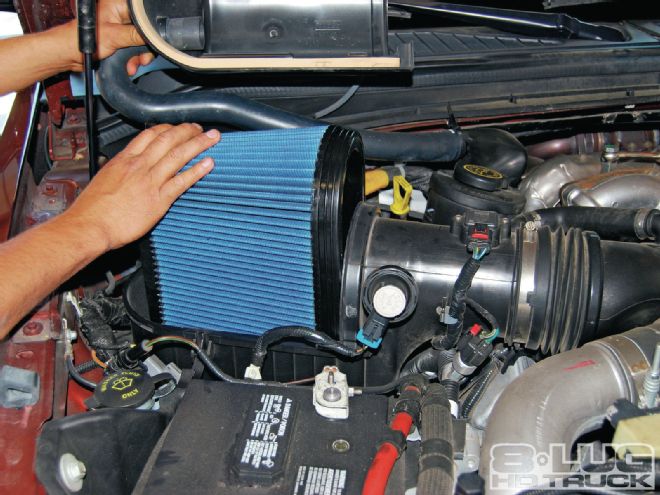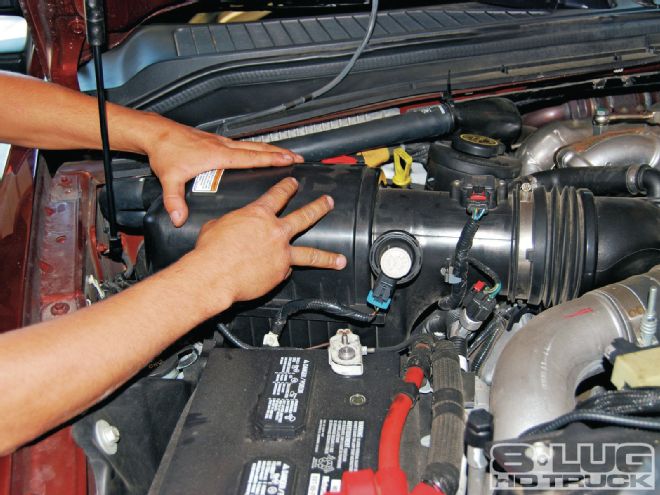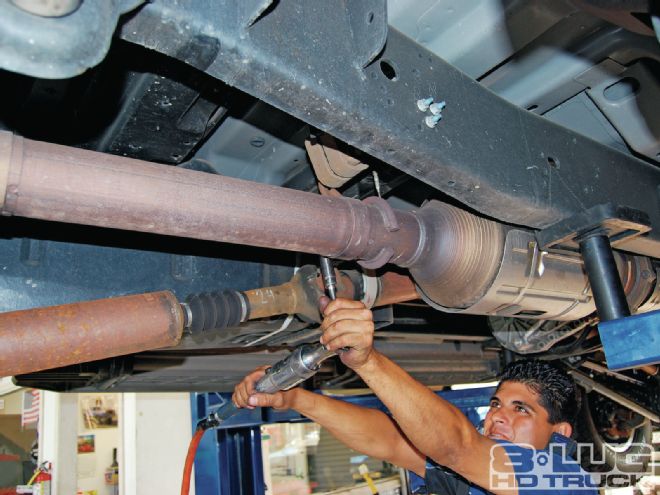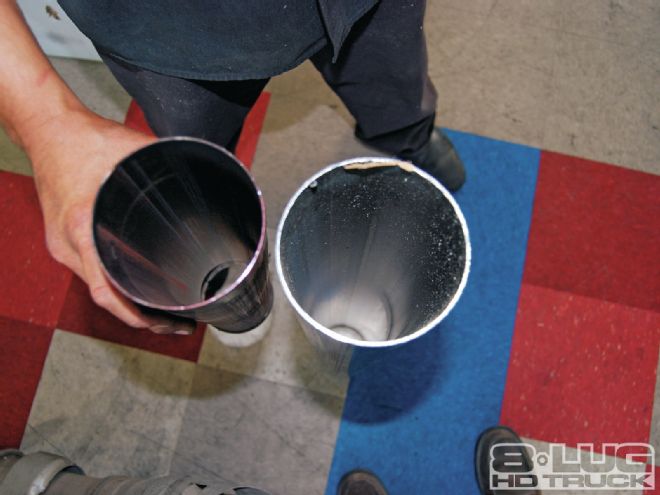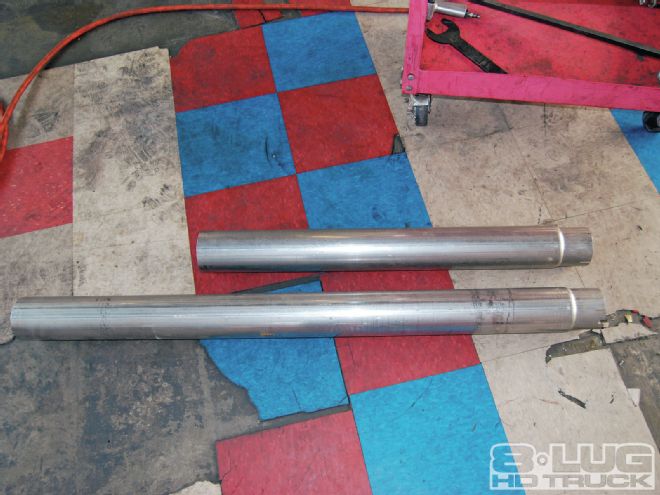Last issue, Project KR got a lift kit and larger tires installed to give it the stance we wanted. With the new look, though, we lost 2 mpg in fuel economy due to increased airflow resistance caused by the lift and larger tires.
With our Ford F-250 diesel there are several ways to increase fuel economy. The question is: Which way best fits our requirements?

| The Edge Evolution, installation pod, and data link cable are all you need to add up to 100 hp to your truck.
John Hamlin, owner of Diesel Performance Shops in Van Nuys, California, has a wealth of knowledge on the subject. For our application, he recommended the Edge Evolution programmer for its ease of installation, flexibility, and performance. This programmer offers four levels of tune above stock. Level 1 adds 25 hp and 55 lb-ft of torque. Level 2 adds 40 hp and 75 lb-ft of torque. Level 3 adds 60 hp and 130 lb-ft of torque. Level 4 adds 100 hp and 200 lb-ft of torque.
The Evolution also monitors (via the OBDII port) exhaust gas temperature (EGT) and 11 other vital engine functions, including the transmission fluid temperature. No drilling is required for sensors nor is any intrusion of the factory wiring necessary. In the digital display mode, there is a maximum of four functions shown at any one time, but you get to choose from 12 available options.
With the programmer chosen, we needed to address the intake and exhaust. AFE offers both air cleaner upgrades and DPF-back exhaust systems. For the intake, a reusable replacement filter is offered (part number 10-10107) that does not require any modification to the factory air cleaner housing. If a complete cold-air intake system is your desire, AFE has part number 54-11262, which replaces the factory airbox. With increased airflow from the intake side, we turned our attention to the exhaust system. Part number 49-43006 is a DPF-back system, manufactured in 409 stainless steel using tubes that are larger diameter than stock tubes and mandrel-bent. John recommends not increasing power beyond 100 hp and 200 lb-ft of torque with the truck in stock form. The Edge Evolution also has different levels of tunes, and all of them protect the truck—no matter how it’s being used. Economy (Level 1) is for daily driving and is tuned for optimum fuel economy. Towing (Level 2) is intended for heavy loads, like a boat or camper. This setting provides improved transmission shifting along with modified fuel timing and fuel injection strategies. The goal here is to improve fuel economy as well as provide added horsepower and torque. Race (Level 3) is what the name suggests and is not recommended for towing. The transmission strategy is modified by providing quicker, firmer shifts. Extreme (Level 4) should also not be used when towing. This is the highest performance setting on the Evolution, with the fuel injection and fuel timing strategies aggressively tuned to extract maximum performance without sacrificing driveability or durability. The transmission strategy is modified, providing quicker, firmer shifts.

| We began by removing the weatherstripping near the A-pillar on the left side of the dashboard. Next, we pulled off the access panel.
Review
John typically sees the highest gains in fuel economy when using Level 4, but only if driven with moderation. If you are constantly under hard acceleration, Level 1 is best for fuel economy and extending the life of the vehicle. Driving Project KR in stock trim on the same route from the San Fernando Valley to Kernville, California, several times before the lift, confirmed an average of 16.8 mpg roundtrip. After we installed the lift, tires, and wheels—driving the same route—we dropped to 14.6 mpg for a loss of 2.2 mpg. With the AFE DPF-back system, air filtration system, and the Edge Evolution installed, we made the same run from the San Fernando Valley to Kernville. Using Level 4, we jumped to 16.9 mpg (a 2.3-mpg increase), giving us back our lost fuel economy from the lift and tires. Remember, there is an added increase in engine power. The feeling you get when you quickly pass the car next to you up a grade in an 8,500-pound truck is fantastic—as John describes it: “the big-block feeling.”
